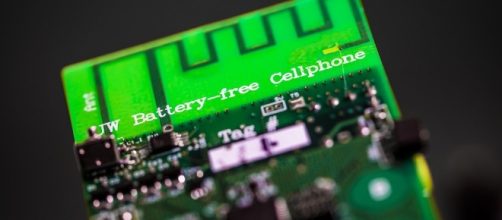While most manufacturers and tech firms are racing to build the most efficient and most power-dense batteries for mobile and compact devices, a group of researchers from the University of Washington is approaching the problem a bit differently. Most firms are trying to create batteries that charge faster and retain more power, but the team at the University has done things differently by removing one key component, the battery itself.
Look ma, no batteries!
The team recently published a research paper late last month that outlined how their battery-free phone works.
Now, the team has showcased their very first prototype that essentially functions as a normal cellular phone without the use of a battery. The device, which is a Circuit Board integrated with off-the-shelf components, runs on a ridiculously low 3.5 microwatts of juice. It gets its power from a combination of tiny photodiodes the size of a grain of rice and a component that draws power from surrounding radio signals. The signals themselves come from the custom built base station that is placed 50 feet away.
Power saving
The prototype device looks like it is just a bare-bones circuit board with no real characteristics of being a phone, except for its capacitive number pads. The device does not have a screen to speak of nor does it have any other typical smartphone features.
The team has also opted to use analog audio signals instead of digital data, which they revealed is actually the most energy-consuming part of the smartphone. During a call, the phone relays its analog signal to the base station, which then transfers it to the cellular network. The team used Skype during the demo to show that the system does work. However, the biggest problem with it is that users cannot send and receive audio signals simultaneously, which means that the phone essentially functions like a walkie-talkie during a call.
Limited functionality
The system itself is still far from being practical for modern smartphones, which consume a significantly larger amount of power. The researchers, however, envision a day when the technology is developed enough to be used on feature phones that can make calls and send SMS messages.
The device might even come with a rudimentary low-power e-ink screen and other features. The technology can also be utilized as an alternate power source for different devices that do not need a large amount of juice to run.


